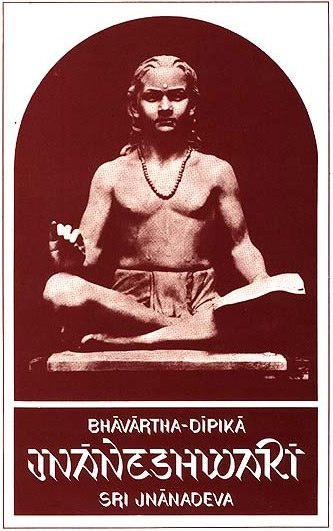Jnaneshwari (Bhavartha Dipika)
by Ramchandra Keshav Bhagwat | 1954 | 284,137 words | ISBN-10: 8185208123 | ISBN-13: 9788185208121
This is verse 13.22 of the Jnaneshwari (Bhavartha-Dipika), the English translation of 13th-century Marathi commentary on the Bhagavad-Gita.—The Dnyaneshwari (Jnaneshwari) brings to light the deeper meaning of the Gita which represents the essence of the Vedic Religion. This is verse 22 of the chapter called Kshetra and Kshetrajna Yoga.
Verse 13.22
Verse 13.22: “Witness at close quarters, Giver of assent, Sustainer, Experiencer, the Great Lord, as also the Higher Self; thus is the Person Supreme designated when indwelling within this body. (1022)
Commentary called Jnaneshwari by Jnaneshwar:
He (Purusha) stands stiff and erect in Prakriti (as her Sustainer) in the way does the supporting pole of the creeper-plant ‘Jai’ (jāī), but their nature is as divergent as that of the earth and the sky. He stands, Oh Kiriti, firm and immovable like the Mountain Meru, on the bank of the river in the form of Prakriti, and casts his reflection in it (river) but does not drift along with its current. Prakriti appears and vanishes but (on the contrary) Purusha is already eternal, and as such he is the dictator of all things from the God Brahma down to insignificant grass (Prakriti exists solely because of him and gives birth to the entire universe through his power and therefore he is Prakriti’s husband. The universe she has created since time immemorial, Oh Kiriti, is dissolved in Purusha at the end of each aeon. He is the Supreme Lord of Prakriti—(mahadbrahma—Supreme Brahma) and the control of the entire universe rests in his hands, and with his unbounded pervasion he can measure the entire world–(affairs). He is that person Supreme, designated as dwelling within the (living) body, It is said there is a person who exists beyond the bounds of Prakriti and he is this Purusha.
